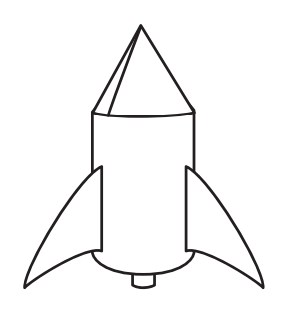In this activity, students use pop bottle rockets to explore how mass affects the flight distances of toy rockets.
2L pop bottle rockets are an excellent way to demonstrate the effects of forces on objects, and provide many opportunities for observing, predicting, measuring and carrying out experiments while controlling for variables.
Part III in this series of activities demonstrates how mass affects the rockets’ distance travelled (its range).
You can do this activity on its own, or in combination with Part I and/or Part II of the series for a deeper investigation into forces and rocket flight.
Mass, Acceleration and Force
If you did Part II, you will have noticed that adding a small amount of water to the bottle causes it to fly much farther. Why is that?
Water is heavier than air; it takes more force to throw water downward compared to air. In other words, the action force is greater when water is involved, and so the reaction force (the water pushing the bottle upward) has to be greater, too.
However, there’s a tradeoff. While the water is whooshing out of the bottle, it’s also accelerating a heavier rocket! From Newton’s Second Law, we know that you need more force to accelerate a heavier object. So, there’s an ideal “medium” amount of water to create lots of thrust without adding too much weight.
Safety Tips:
Flying bottle rockets is a lot of fun, but be sure to take safety precautions seriously:
- Rockets travel far; do not do this activity indoors.
- Every launcher should be supervised by an adult.
- Do not pressurize the rocket past 40 psi (pounds per square inch).
- When pressurizing and launching the rocket, everyone should stand well away from the launcher. Make sure that all observers know that a rocket is about to be launched–a countdown and safety zone combination work well for this.
- Watch the rocket’s entire flight to make sure it doesn’t hit anyone as it falls.
- Use only paper/cardboard fins, never metal.
- Wear eye protection.
